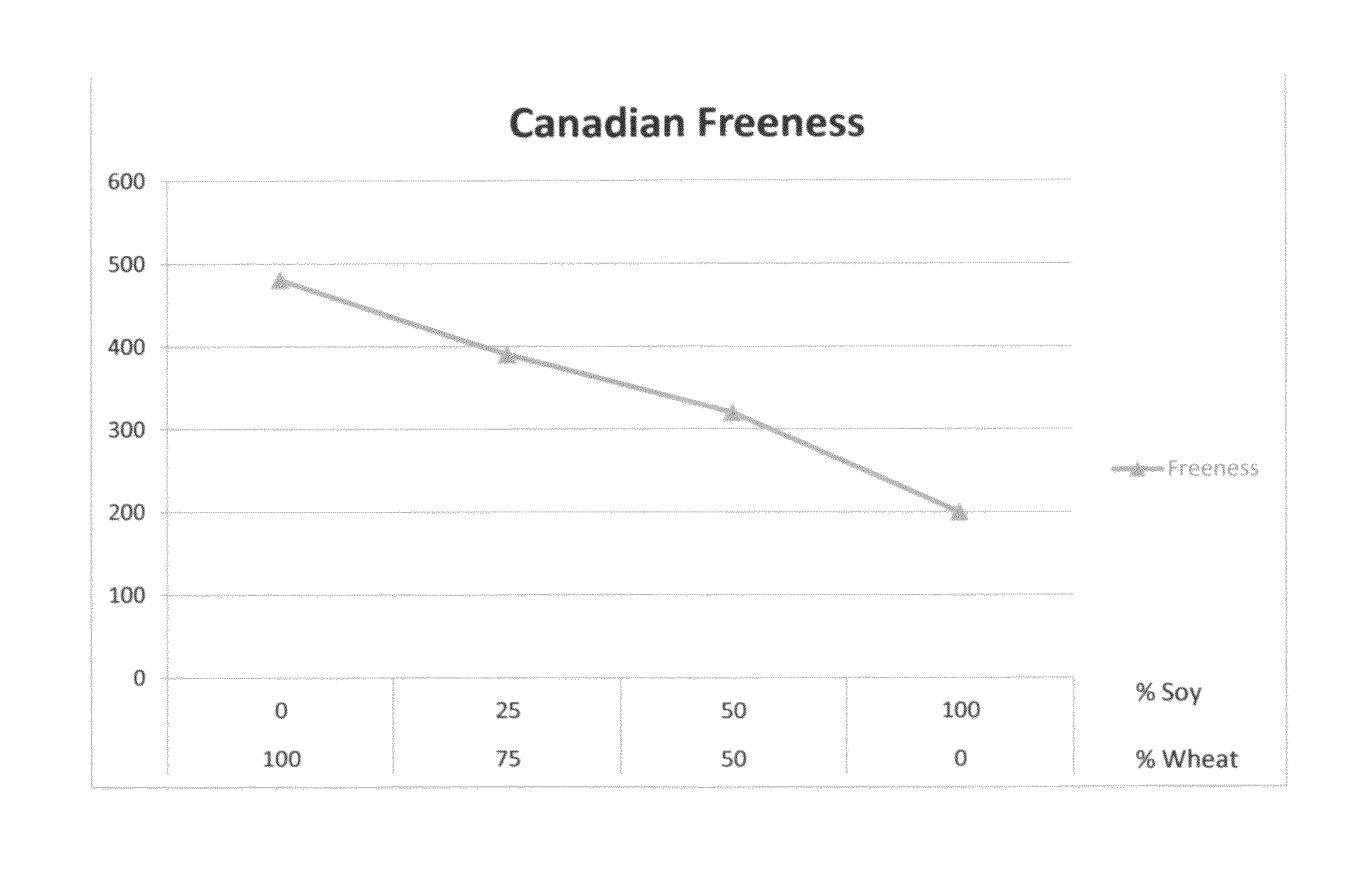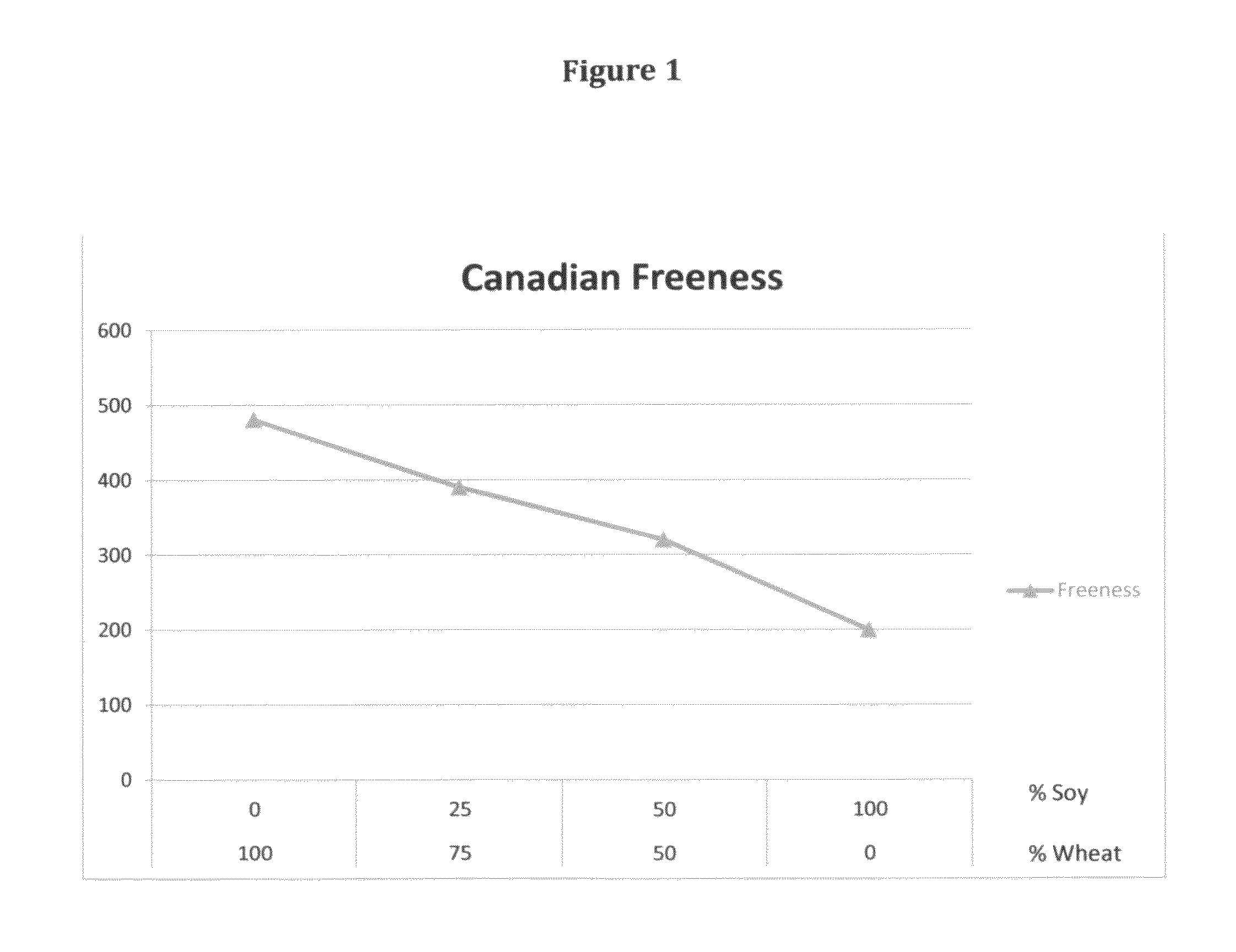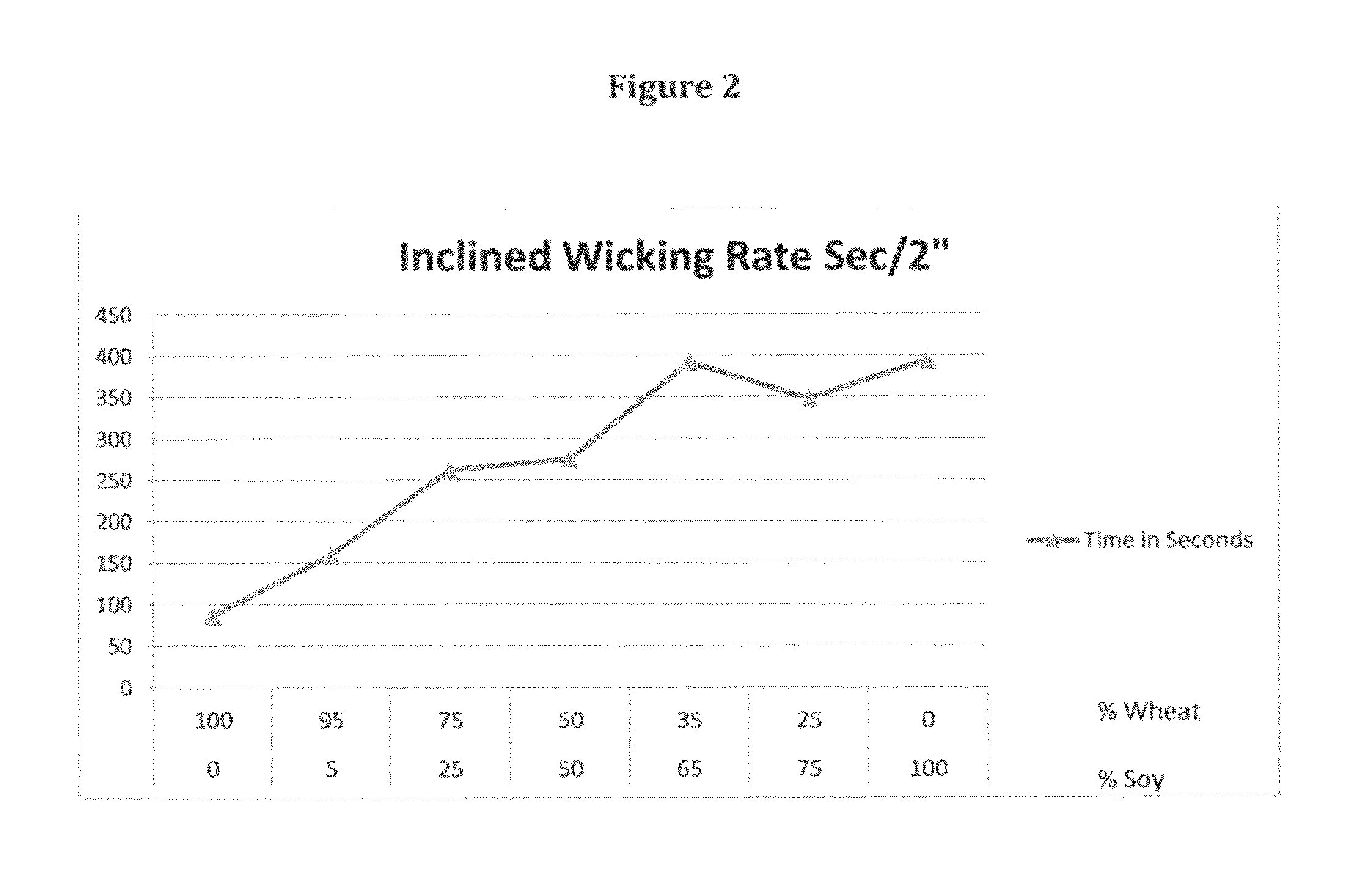Soy stalk and wheat straw pulp fiber mixtures
a technology of wheat straw and wheat straw, which is applied in the field of annual crop straw and stalk fibers, can solve the problems of large amount of waste stalk disposal, significant effort, and unsustainable process, and achieve the effect of increasing the ratio of soy fibers and reducing the wicking ra
- Summary
- Abstract
- Description
- Claims
- Application Information
AI Technical Summary
Benefits of technology
Problems solved by technology
Method used
Image
Examples
example # 1
EXAMPLE #1
[0064]Harvested wheat straw was obtained in bale form and processed through a Hay Grinder with a 3 inch minus screen to provide chopped fiber. Fifty kilograms of chopped straw was placed in a digester at 10% consistency and 10% NaOH caustic by dry fiber weight. The mixture was then cooked at 190 degrees Fahrenheit for one hour. The digested fiber slurry was then refined using a 12″ Sprout Waldron double disc refiner set at minimum plate clearance. The refined fiber was then dewatered to about 25% solids using a screw press. The dewatered fiber was then diluted with water to 4% consistency. The product was then pumped through a pressure screen using a 0.20″ slotted screen; the accepts that passed though the screen were saved for use in making product and testing fiber and product properties reported in this application.
example # 2
EXAMPLE #2
[0065]Harvested soy stalk was obtained in bale form and processed through a Hay Grinder with a 3 inch minus screen to provide chopped stalk. Fifty kilograms of chopped stalk was placed in a digester at 10% consistency and 10% NaOH caustic by dry fiber weight. The mixture was then cooked at 190 degrees Fahrenheit for one hour. The digested fiber slurry was then refined using a 12″ Sprout Waldron double disc refiner set at minimum plate clearance. The refined fiber was then dewatered to about 25% solids using a screw press. The dewatered fiber was then diluted with water to 4% consistency. The product was then pumped through a pressure screen using a 0.20″ slotted screen; the accepts that passed though the screen were saved for use in making product and testing fiber and product properties reported in this application
example # 3
EXAMPLE #3
[0066]Laboratory hand sheets were prepared from the finished fibers of Examples #1 and #2 as follows: the wet slurries of wheat straw fiber, soy stalk fiber and mixtures of both fibers were weighed in a beaker and transferred to a disintegrator and processed for 500 revolutions. The slurry was then transferred to a hand sheet mold and wet laid into an 8″×8″ sheet at 140 grams per square meter basis weight. The sheets were then dried at 300 degrees Fahrenheit, and then pressed for one minute between polished steel plates. The following hand sheet compositions were prepared:[0067]1. 100% wheat straw fiber[0068]2. 100% soy stalk fiber[0069]3. 95%wheat fiber / 5% soy fiber[0070]4. 75% wheat fiber / 25% soy fiber[0071]5. 50% wheat fiber / 50% soy fiber[0072]6. 25% wheat fiber / 75% soy fiber[0073]7. 35% wheat fiber / 65% soy fiber.
[0074]The fiber slurries of Example #3 containing 100% wheat straw fiber, 100% soy stalk fiber, 75% wheat straw fiber / 25% soy stalk fiber, and 50% wheat straw ...
PUM
| Property | Measurement | Unit |
|---|---|---|
| density | aaaaa | aaaaa |
| diameter | aaaaa | aaaaa |
| weight | aaaaa | aaaaa |
Abstract
Description
Claims
Application Information
 Login to View More
Login to View More - R&D
- Intellectual Property
- Life Sciences
- Materials
- Tech Scout
- Unparalleled Data Quality
- Higher Quality Content
- 60% Fewer Hallucinations
Browse by: Latest US Patents, China's latest patents, Technical Efficacy Thesaurus, Application Domain, Technology Topic, Popular Technical Reports.
© 2025 PatSnap. All rights reserved.Legal|Privacy policy|Modern Slavery Act Transparency Statement|Sitemap|About US| Contact US: help@patsnap.com



